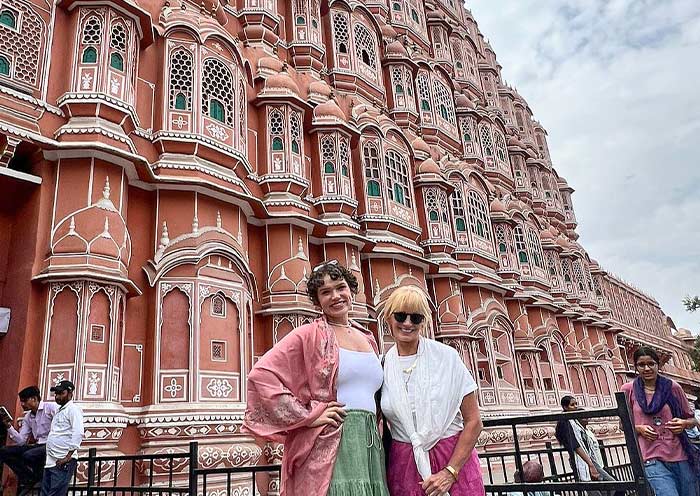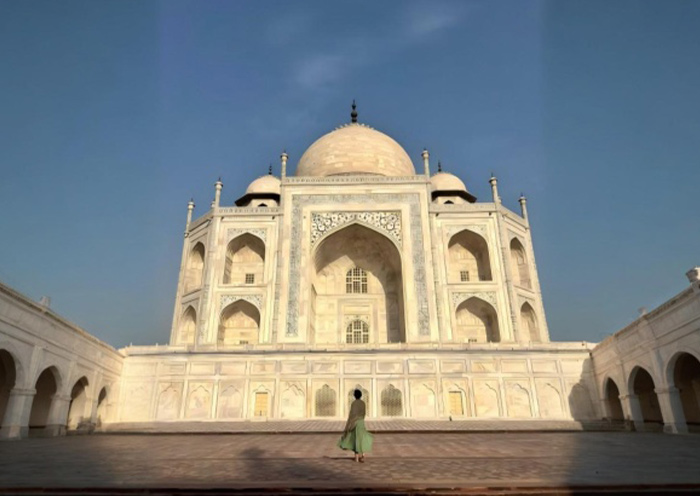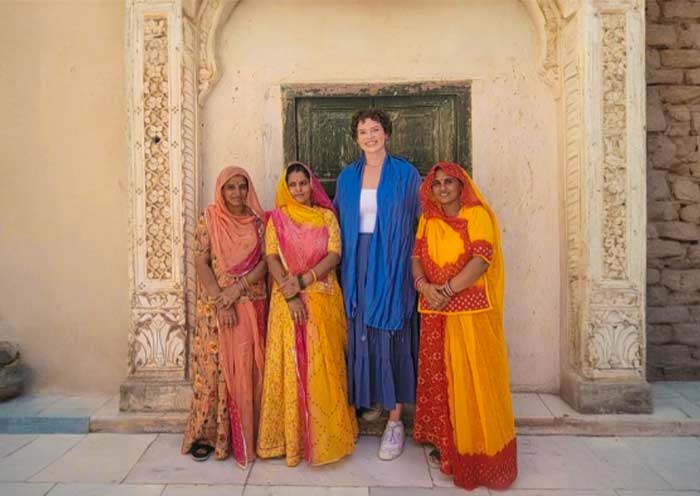9 Days India Group Tour: Golden Triangle with Udaipur - Popular Route

-
Tour Code: AOT-IND-D
-
Travel Route: Delhi - Agra - Jaipur -Udaipur - Delhi
-
Features: Culture, Art, Architecture, Religious Sites, Temples, Forts, Palaces, Royal Tombs, Monuments, World Heritage, Markets, Museums, Food and Cuisine, Lake
-
Tour Type: Small Group of maximum 12 travelers, guaranteed departures;
-
Guide & Driver: English-speaking guide, experienced driver with a regular tourist vehicle
-
Accommodation: 8 Nights at 3 Star Standard Hotel
- Itinerary
- Dates & Price
- Accommodation
- Trip Notes
- Reviews
This 9-Day India Group Tour is best for those who want to explore India's famed Golden Triangle with time left over to visit the stunning lake city of Udaipur. The Golden Triangle Tour with Udaipur is a popular travel itinerary in India, you will explore four fabulous cities Delhi, Agra, Jaipur, and Udaipur, each with its unique charm.
You'll start in Delhi, a capital city where ancient history and modernity converge, seeing all the top sights of the old and new city, followed by a jaunt down to Agra, which is home to the iconic Taj Maha, witnessing the sunrise over this epitome of love. From there it's on to Jaipur to experience the pink city’s stunning forts, exquisite architecture and vibrant markets before heading to Udaipur, the Venice of the East, with its romantic lake and gorgeous whitewashed palaces.
With a small group size of just 12 persons, you'll enjoy a safe and enriching travel experience, surrounded by like-minded individuals. Every aspect of your journey, from accommodations to transportation, is meticulously arranged, allowing you to immerse yourself fully in the beauty and diversity of India without any hassles.
Itinerary at a Glance
Delhi (3 Days)
Jama Masjid, Chandni Chowk, India Gate, Qutub Minar, Humayun's Tomb, Red Fort (outside view)
Agra (2 Days)
Mehtab Bagh, Taj Mahal, Agra Fort, Itmad-ud-Daula's Tomb, Fatehpur Sikri
Jaipur (2 Days)
Amber Fort, City Palace, Jantar Mantar, Hawa Mahal
Udaipur (2 Days)
Jagdish Temple, City Palace, Boat Ride on Lake Pichola, Sajjan Garh Palace
Delhi
Itinerary Day by Day
Welcome to Delhi, the capital city of India! When you arrive at Indira Gandhi International Airport, our local professional guide and driver will pick you up and escort you to the downtown area. After checking in at your hotel, you can relax and decompress from your long flight for the rest of the day.
Delhi is a fascinating metropolis that seamlessly blends the old with the new. Divided into two distinct parts - Old Delhi and New Delhi - the city offers a captivating journey through time, where ancient traditions coexist with modern developments.
Arrival Ideas:
1. Flights to Delhi: Travelers can take international flights to Indira Gandhi International Airport from major cities in Europe (London, Paris, Frankfurt, Amsterdam, Rome), the Middle East (Dubai, Doha, Abu Dhabi), North America (New York, Toronto, Los Angeles), and Asia (Kathmandu, Singapore, Phuket, Istanbul, Kuala Lumpur, Kuwait, Bangkok, Colombo). India domestic flights connect New Delhi with Varanasi (1h 20m), Udaipur (1h 25m), Mumbai (2h), Amritsar (1h 20m), and other destinations.
2. Delhi Airport Transportation: Delhi Airport is located in Palam, about 18km southwest of central Delhi. The airport is well-connected to the city center, with a typical travel time of 30 to 45 minutes by car.
Free Time Ideas (Optional): Red Fort Sound and Light Show (Jai Hind, Evening Show of 60 min)
With a seating arrangement of 700 people for a single viewing, this spectacular evening show brings the history of the Red Fort (World Heritage) and Delhi to life in a fun and engaging way! (Tips: Closed on Mondays. Make sure to book your tickets in advance. Show timings: 6:30 - 7:30 pm in Hindi; 8:15 - 9:15 pm in English).
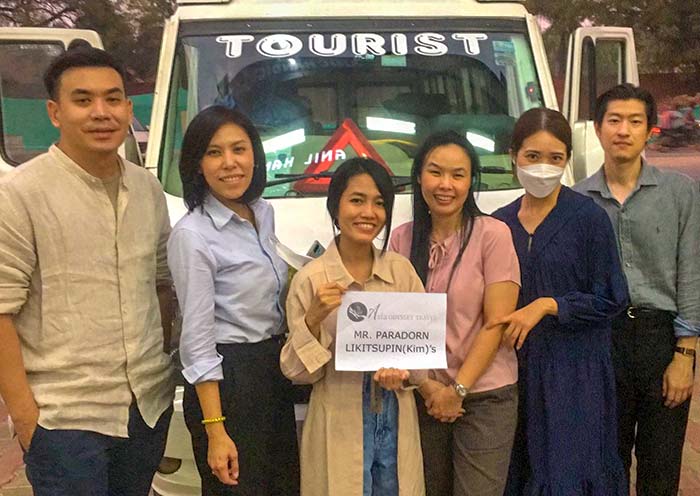
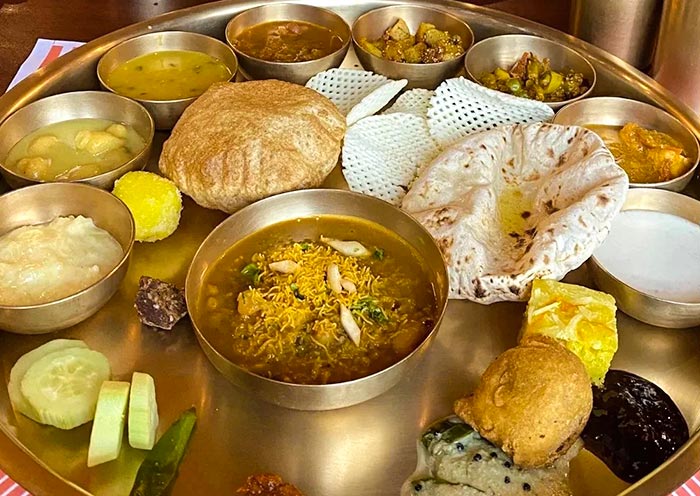


Attractions
Explore according to your flight time
Transportation
Vehicle
Dining
Dinner
Accommodation
Delhi
Get ready for an extraordinary adventure in Delhi! Today, you’ll embark on a unique time travel tour, journeying from the majestic Old Delhi steeped in history, all the way to the modern marvels of New Delhi. This exciting exploration will weave together the vibrant tapestry of Delhi, allowing you to witness the city's ancient grandeur seamlessly blend with its contemporary flair.
Your exploration begins in the heart of Old Delhi, where you'll visit Jama Masjid, one of India's largest and most awe-inspiring mosques. Construction began in 1644 under the reign of the Mughal emperor Shah Jahan, the same visionary who brought us the Taj Mahal. This magnificent structure, also known as Masjid-i-Jahan Numa (meaning "mosque commanding the view of the world"), is crafted from red sandstone and adorned with beautiful white marble. Step back into the 17th century and stand in awe under the towering minarets of Jama Masjid. Feel the spiritual energy resonate through time and imagine the grandeur of the Mughal era as the call to prayer echoes through the centuries.
Later, take a stroll to Chandni Chowk, one of the oldest and busiest markets in Old Delhi. Also established by the Shah Jahan in the 17th century, this market is a maze of narrow alleyways filled with small shops offering delectable snacks, sweets, and savories, as well as budget-friendly deals on clothing and other items. Chandni Chowk stretches from the iconic Red Fort to the historic Fatehpuri Masjid, covering a significant distance. To fully immerse yourself in the charm of Old Delhi, we recommend taking an optional rickshaw tour around Chandni Chowk.
Don't miss the opportunity to pass by the Red Fort (World Heritage) and marvel at its symbol of grandeur. Known as Lal Qila and built by the Shah Jahan, the fort serves as the main residence for the Mughal emperors of India and is recognized as a significant architectural masterpiece.
After that, make your way to New Delhi and explore the iconic India Gate. This magnificent memorial is dedicated to the Indian soldiers of World War I. Resembling the Arc de Triomphe in Paris, India Gate stands as a prominent landmark, symbolizing an important chapter in India's history.
As you move forward, you'll have the opportunity to witness the transformation of Delhi into a thriving modern metropolis while also having a chance to take photos of several notable landmarks, including the Rashtrapati Bhavan (Presidential Residence), Parliament House, North Block, and South Block.
Then, you will arrive at Qutub Minar, a UNESCO World Heritage Site and the tallest brick minaret in the world. Standing proudly at an astonishing height of 72.5 meters (238 feet), the Qutub Minar showcases the exquisite craftsmanship of Indo-Islamic architecture. Prepare to be enthralled by the sheer magnificence of this historical masterpiece as you delve into its rich and fascinating history that dates back to the 12th century.
Finally, visit Humayun's Tomb, another jewel in Delhi's crown and a UNESCO World Heritage Site. It holds the distinction of being the first significant example of a Mughal garden tomb. Its breathtaking design and captivating blend of Persian and Indian architectural styles even served as inspiration for the future wonder of the world, the Taj Mahal! Adorned with intricate marble inlays and surrounded by Char Bagh gardens, this red sandstone monument stands as an iconic symbol of Mughal architecture. Stroll through the paradise garden, marvel at the architectural grandeur, and immerse yourself in the captivating love story it holds.
After this amazing tour, you’ll head back your hotel.
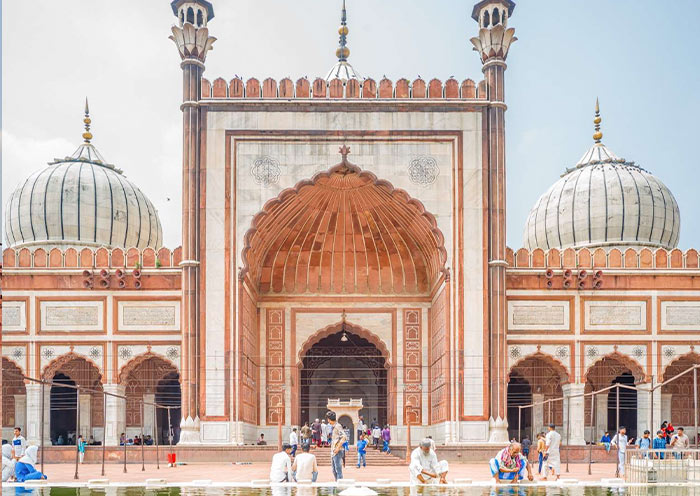

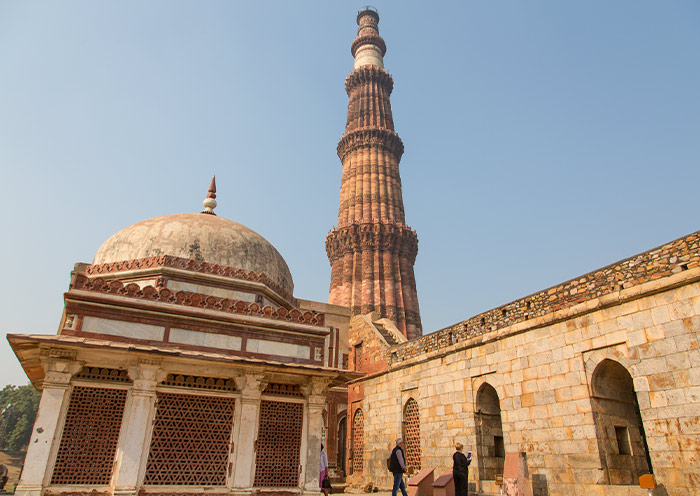

Attractions
5 iconic sites
Transportation
Vehicle
Dining
Breakfast
Accommodation
Delhi
Start your day with a tasty breakfast at your hotel in Delhi and bid farewell to the capital of India in the morning. Head off to Agra, a journey of approximately 250km (155miles) that takes about 4.5 hours, depending on traffic conditions.
The primary route for travel between Delhi and Agra is the Yamuna Expressway. It is known for its well-maintained surface and infrastructure. With our selected vehicle, that's a comfy road trip guaranteed. And it's a scenic road trip as well! Witness the captivating transformation as Delhi's urban sprawl transitions into picturesque landscapes, flyover bridges right over lush green fields, and vibrant agricultural farms painting the landscape. So don't hesitate to ask for a pit stop to capture the essence of the journey with your camera!
Upon arrival in Agra, you can visit Mehtab Bagh for an amazing sunset view. Known as the "Moonlight Garden", Mehtab Bagh is a 16th-century Mughal-era garden that offers a unique perspective of the Taj Mahal, especially during sunset. Watch the iconic Taj Mahal's silhouette reflecting over the calm Yamuna River, creating a truly magical scene. It's a perfect sneak peek preview of the Taj Mahal.
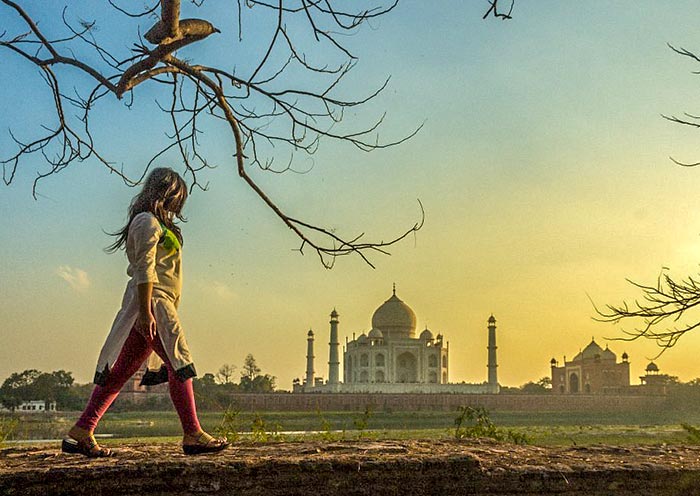
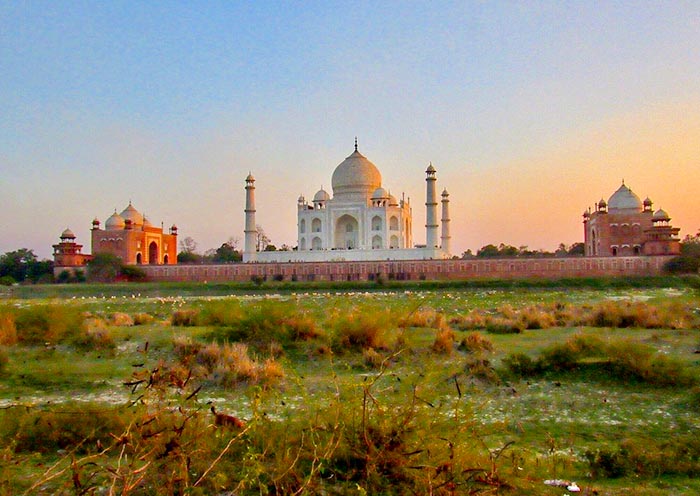
Attractions
1 iconic site
Transportation
Vehicle
Dining
Breakfast
Accommodation
Agra
Today will be the big day for the Taj Mahal (World Heritage)! Your knowledgeable guide will pick you up from your hotel in the pre-dawn hours, so you can enjoy a serene sunrise viewing of the Taj Mahal bathed in an ethereal glow, away from the day's heat and crowds.
As you approach the magnificent Taj Mahal, you can admire its immaculate white marble facade glistens in the morning light. This remarkable architectural masterpiece, recognized as one of the New Seven Wonders of the World, serves as an eternal symbol of love. Emperor Shah Jahan built the Taj Mahal in the 17th century as a tribute to his beloved wife, Mumtaz Mahal.
Walking up to the Main Gate of the Taj Mahal is an experience in itself. The gate is carved from red sandstone and adorned with intricate floral patterns. It serves as a grand prelude to the awe-inspiring monument that awaits you. Stepping through, you enter the Charbagh, a formal Mughal garden divided into four perfect quarters by reflecting pools. This symmetry and balance foreshadow the architectural mastery evident in the Tomb itself.
The centerpiece of the Taj Mahal complex is the white marble mausoleum, which houses the cenotaphs of Shah Jahan and Mumtaz Mahal. The story goes that Shah Jahan deliberately built the minarets of the Taj Mahal - towers that serve as vantage points and landmarks - away from and tilted outwards from the main structure. In the unlikely event of a collapse, they would fall away from the Taj Mahal. So the tomb of his beloved wife would remain unharmed. Intricate floral designs, calligraphy, and semi-precious stone inlays that adorn the tomb's surface offer a glimpse into the unparalleled craftsmanship of the era, leaving you breathless with its beauty.
After marveling at the architectural mastery of the Taj Mahal, you will return to your hotel for a refreshing breakfast.
Then, you will continue the journey to Agra Fort (World Heritage). By the way, Shah Jahan was imprisoned in the Agra Fort by his son Aurangzeb. From his vantage point, he is said to have gazed upon the Taj Mahal, which served as a constant reminder of his beloved wife.
Agra Fort is a formidable red sandstone fort built by Emperor Akbar in the 16th century, serving as the seat of Mughal power for nearly a century. Your guide will lead you through the imposing gateways, showcasing the fort's rich history and architectural brilliance. Explore the various palaces, courtyards, and audience halls that once housed emperors, their families, and the Mughal court. Witness the exquisite craftsmanship evident in the intricate carvings, marble inlay work, and jali screens (decorative perforated stonework).
Next, you’ll explore Itmad-ud-Daula's Tomb, also known as the "Baby Taj" which was built by Empress Nur Jahan. This 17th-century mausoleum foreshadows the grandeur of the Taj Mahal with its intricate stone inlay work (perfected later), white marble, and geometric patterns, showcasing the evolving Mughal architectural style. Some might even say that its intricate architectural elements outshine the Taj Mahal!
After the tour, drive back to your hotel in Agra.
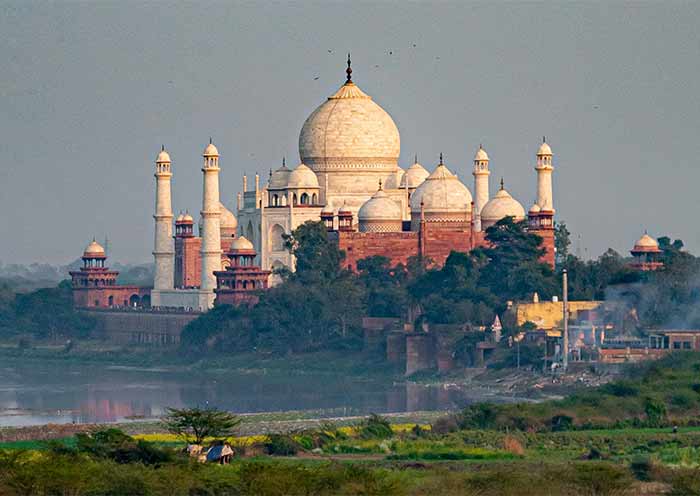
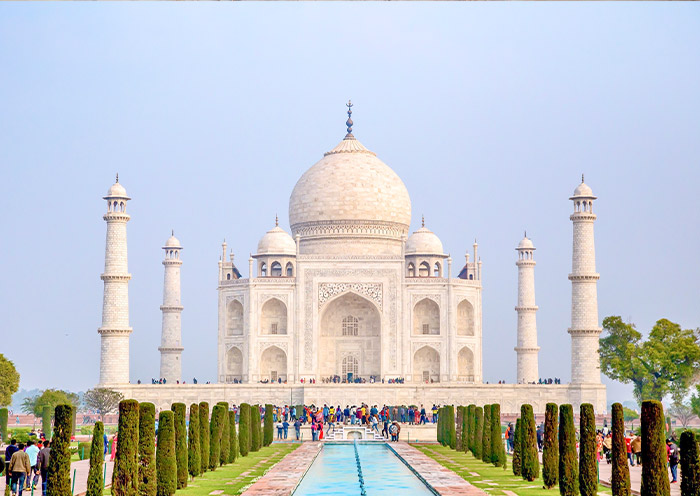

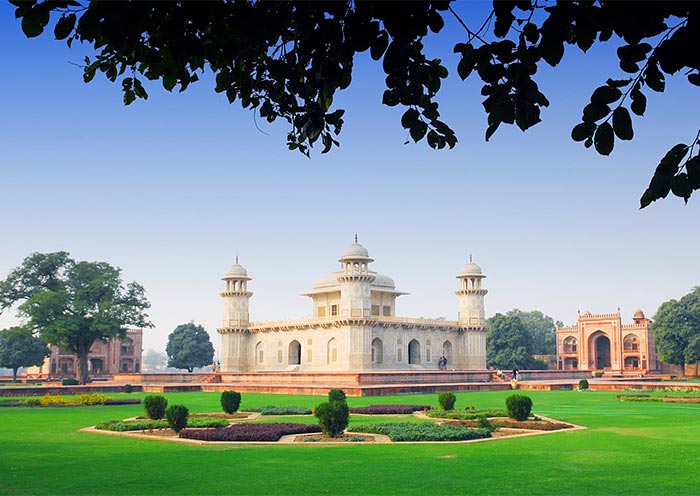
Attractions
3 iconic sites
Transportation
Vehicle
Dining
Breakfast
Accommodation
Agra
Begin your day early with breakfast at your hotel in Agra. Afterward, you will depart from Agra and make your way to Jaipur via Fatehpur Sikri (World Heritage). The journey covers approximately 250km and takes about 5 hours.
En route to Jaipur, make a stop at Fatehpur Sikri, meaning "The City of Victory”, which is 40 kilometers west of Agra. It served as the capital of the Mughal Empire under Emperor Akbar from 1571 to 1585. Visiting Fatehpur Sikri offers a deep dive into India's rich history, providing insight into the life and times of one of its most celebrated emperors, Akbar the Great. It is a prime example of Akbar's architectural genius, dominated by red sandstone buildings, showcasing a unique blend of Hindu, Jain, and Islamic architectural styles, a reflection of the syncretic culture developed under Akbar’s rule.
The city is divided into two main areas: the royal palace complex and the religious complex. The royal complex includes stunning buildings such as the Diwan-i-Aam (Hall of Public Audience), Diwan-i-Khas (Hall of Private Audience), Jodha Bai's Palace, Birbal's House, and Panch Mahal, among others. The religious compound features the Jama Masjid (Grand Mosque) and the tomb of Salim Chisti, a revered Sufi saint, which draws pilgrims from all over due to its sanctity and the belief in the fulfillment of wishes tied to it. One of Fatehpur Sikri’s most iconic structures is the Buland Darwaza (The Gate of Victory), standing at a height of 55 meters. It was erected by Akbar to commemorate his victory over Gujarat and is a magnificent example of Mughal architecture. The gate serves as the main entrance to the Jama Masjid.
Following the tour, drive on to Jaipur, which is approximately 210 kilometers away, taking around 4 hours from Fatehpur Sikri. Welcome to Jaipur, the vibrant capital of Rajasthan, India, known as the "Pink City" for its trademark building color. Jaipur's most striking feature is the rose-colored hue of its buildings in the old city center. his distinctive color scheme is attributed to a welcoming gesture by Maharaja Ram Singh who had the city painted pink in 1876 to honor a visit by the Prince of Wales (later King Edward VII). Upon reaching Jaipur, check in at your hotel and take some time to unwind.
Optional Activity: Jaipur Local Bazaar Walking Tour with a Guide (USD 40 per person).
You have the option to participate in a Jaipur Local Bazaar walking tour with your tour guide. Jaipur is a fantastic shopping destination, with lots of bazaars showcase wonderful Rajasthan artifacts such as textiles, gemstones, silver, and pottery. One local specialty is blue pottery, which features hand-painted vessels adorned with floral motifs and geometric patterns in combinations of blue, white, and occasionally other colors.
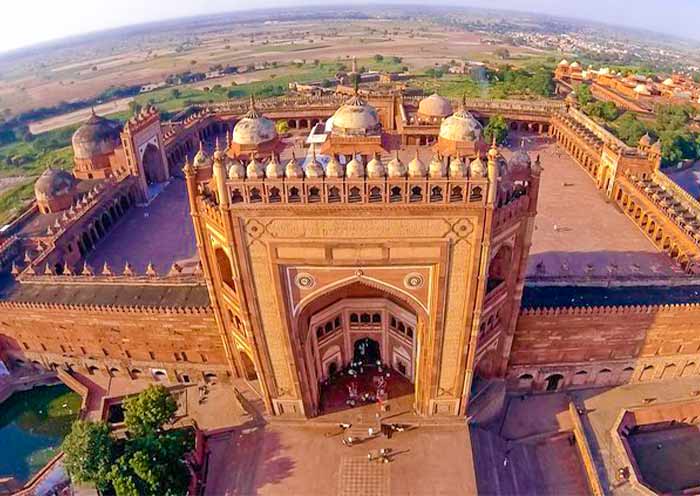
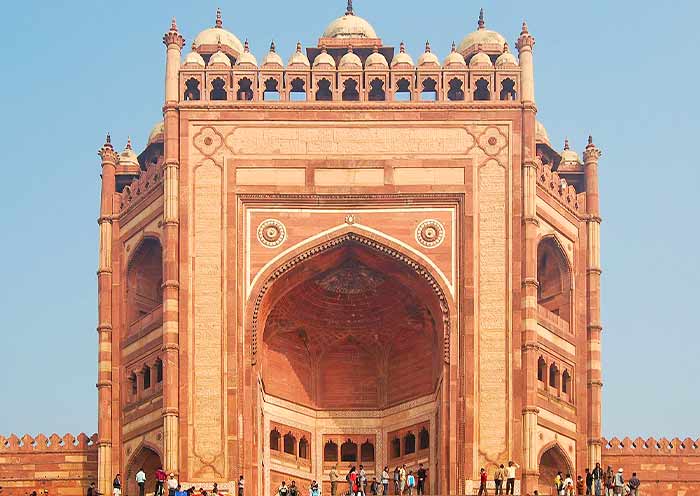

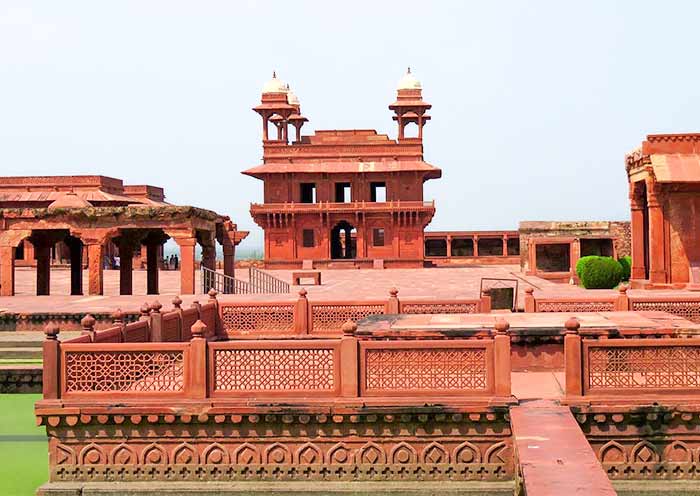
Attractions
1 iconic sites
Transportation
Vehicle
Dining
Breakfast
Accommodation
Jaipur
After a delightful breakfast, embark on a full-day Jaipur sightseeing led by your guide, including visits to the magnificent Amber Fort, the City Palace, the Hawa Mahal, and the Jaipur Jantar Mantar.
Your first destination is Amber Fort (World Heritage). The magnificent, formidable, honey-hued fort of Amber is an exquisite example of Rajput architecture. It is located in the rugged hills about 11km northeast of Jaipur, overlooking Maota Lake, and is a must-see sight in the city. Amber was the former capital of Jaipur state. This magnificent fort comprises an extensive palace complex, showcasing a fine blend of Rajput and Mughal architectural styles. It is built from pale yellow and pink sandstone, along with white marble, and features a grand palace, temples, and several ornate gates. Of particular interest is the Sheesh Mahal (Mirror Palace), where the walls are inlaid with exquisite mirrored motifs that dance in the flickering flame of even a single candle.
Tips: You can choose to take a jeep ride (optional) up to the Amber fork rather than take an elephant ride (optional).
You can reach the Amber fort through the Suraj Pol (Sun Gate) which leads to the Jaleb Chowk, the first main courtyard. Diagonally opposite is the Chand Pol (Moon Gate). From Jaleb Chowk, a flight of stairs leads up to the small Siladevi Temple, whose doors feature relief work in silver. The main palace is up next, which includes the Diwan-e-Am (hall for a private audience with the king) with carved columns and latticed galleries, the king’s apartments, the gate Ganesh Pol with beautiful arches, and Jai Mandir or Sheesh Mahal. Stand at one of the many arched windows of the palace and take in the rolling shrubland stretching up to the horizon and the scenic Maota Lake at the foot of the fort.
Next, head to the City Palace, situated in the old city of Jaipur. It is a sprawling complex that blends Rajput and Mughal architecture styles and serves as the royal residence of the Jaipur royal family. The palace houses several buildings, including Chandra Mahal, the Armoury, Diwan-i-Khas, and Diwan-i-Am Art Gallery, along with courtyards and gardens. Among them, Pitam Niwas Chowk (Courtyard of Love) is a photographer's delight. It is famous for its 4 colored gates, each representing a different season. The Peacock Gate depicts autumn, the Lotus Gate signifies summer, the Green Gate represents spring, and finally, the Rose Gate embodies winter.
No tour would be complete without visiting Hawa Mahal (Palace of Winds). It is renowned for its unique 5-story exterior, resembling the honeycomb of a beehive. This architectural wonder is built of red and pink sandstone, and features an incredible 953 intricately carved windows. These windows, resembling a honeycomb design, gave the building its name ("hawa" meaning "wind" in Hindi) and allowed royal ladies to observe everyday life and festivals in the street below without being seen. The clever design also facilitate the circulation of cool breezes throughout the palace, providing natural air conditioning, especially during the hot summer months. Hawa Mahal is an architectural marvel that blends Hindu Rajput architecture with Islamic Mughal architecture. The facade of Hawa Mahal is a stunning sight, particularly when bathed in the golden light of the early morning or late afternoon.
Immediately behind the Hawa Mahal is the Jaipur Jantar Mantar (World Heritage), considered one of the oldest astronomical observatories in the world, built by Maharaja Sawai Jai Singh II. The observatory houses the world's largest stone sundial and features 16 devices designated to measure time, observe planetary motion around the sun, and keep track of celestial bodies. The geometric devices of the observatory are both functional and architecturally fascinating, offering a glimpse into the advanced astronomy studies of the 18th century.
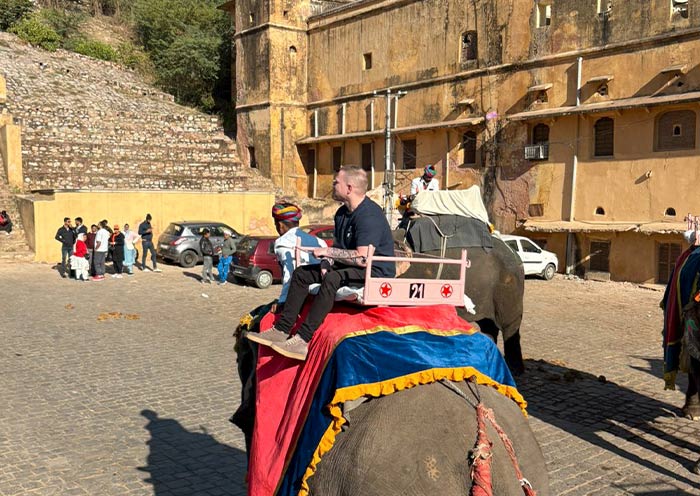
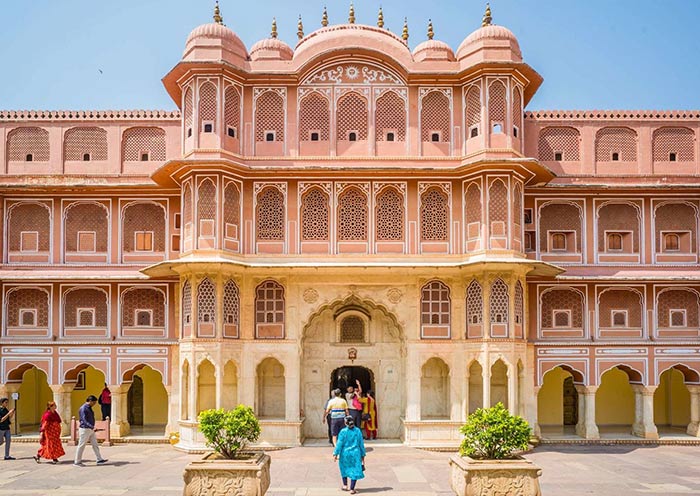
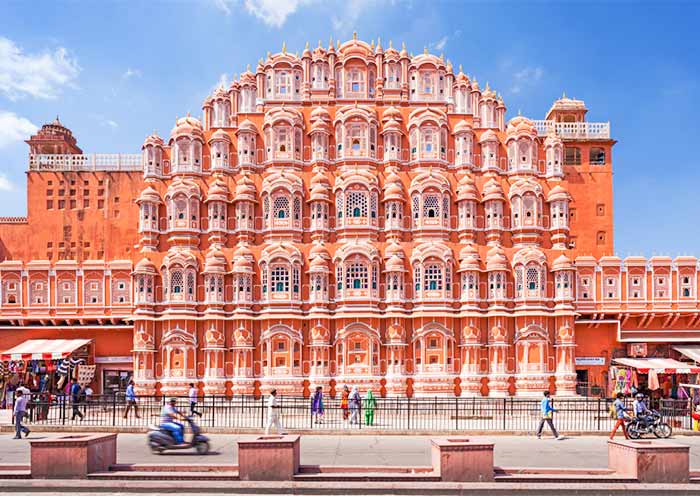

Attractions
4 iconic sites
Transportation
Vehicle
Dining
Breakfast
Accommodation
Jaipur
Begin your day early with breakfast at your hotel in Jaipur. Today we will depart from Agra and make our way to Udaipur. The journey covers approximately 339km and takes about 7 hours.
Welcome to Udaipur, “the most romantic spot on the continent of India ”! Udaipur has a romance of setting unmatched in Rajasthan and arguably in all of India, nestled in the mighty Aravalli range, with shimmering lakes visible from almost every rooftop, fairytale palaces, sprawling havelis, revered temples, and narrow lanes weaving through colorful markets add the human counterpoint to the city. Udaipur also referred to as the "Venice of the East" or the "City of Lake" is renowned for its numerous lakes - precisely seven in number, with Lake Pichola being the largest.
Once you arrive, check into the hotel. After freshening up, take an evening walk around the local market. Stay overnight at the hotel.
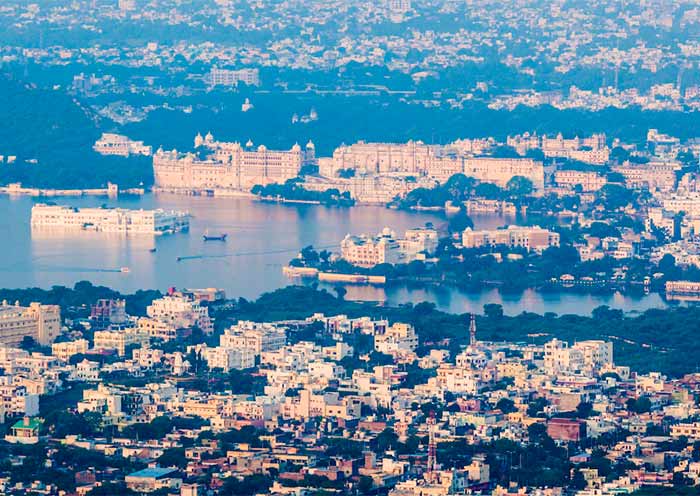
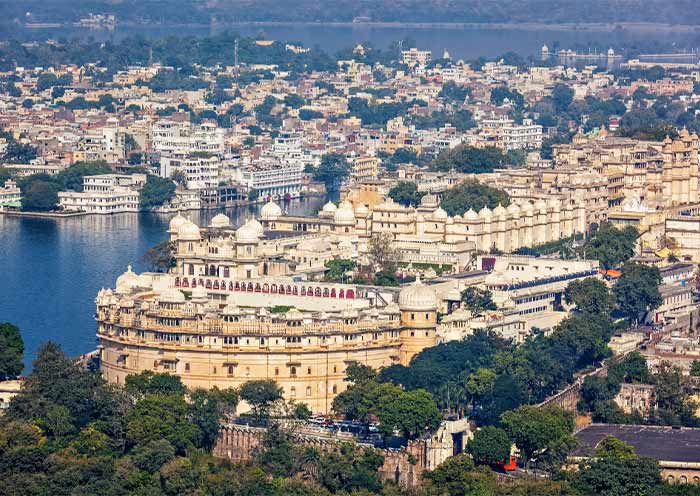
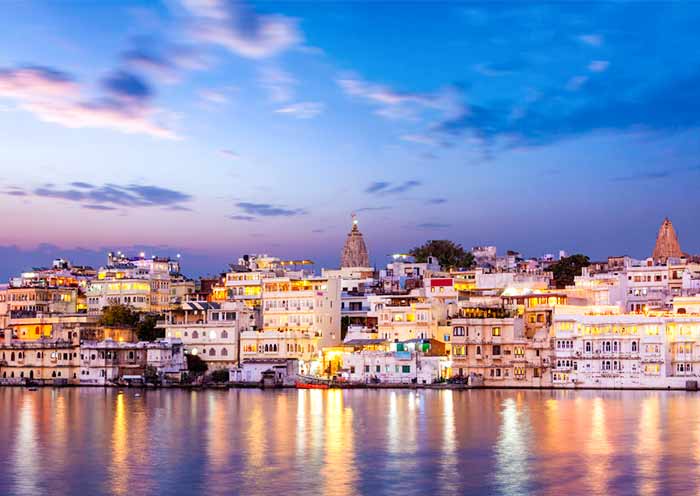
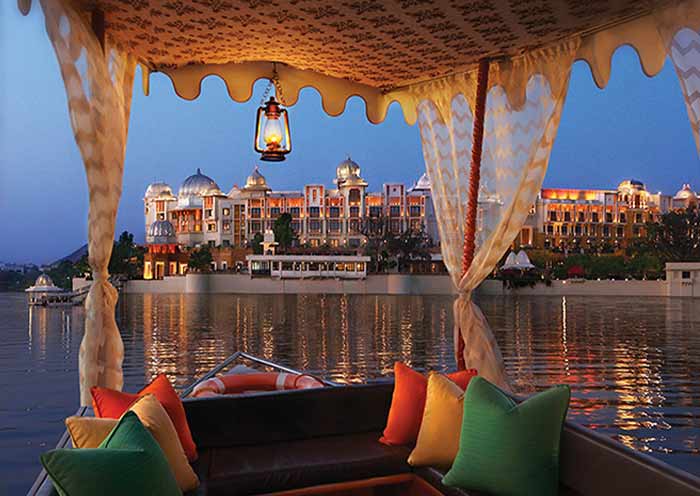
Attractions
0 iconic sites
Transportation
Vehicle
Dining
Breakfast
Accommodation
Udaipur
Start your day with a delightful breakfast, and prepare to explore the city's most iconic sights. Visit the Jagdish Temple, and the City Palace, and take a boat ride on Lake Pichola. Don't forget to enjoy the views of the Monsoon Palace.
Your first destination is the Jagdish Temple. This Indo-Aryan temple was built by Maharana Jagat Singh, who ruled Udaipur between 1628 and 1653. Known as the largest temple in Udaipur, this three-story structure is dedicated to Lord Vishnu and is adorned with carved pillars, decorated ceilings, and painted walls. Upon entering, a meticulously carved archway greets you, featuring intricate sculptures of elephants, horses, and various other animals. The main shrine houses a figurine of the four-armed Lord Vishnu, carved out of a single black stone. The temple's spire or, standing around 80 feet high, dominates Udaipur's skyline. The main shrine is surrounded by four smaller shrines dedicated to Lord Ganesha, the Sun God, Goddess Shakti, and Lord Shiva. An elegant marble staircase of 32 steps leads you up to the main shrine, where a notable brass representation of Garuda, the half-human, half-eagle protector of Lord Vishnu, stands guard. With its rich history and architectural brilliance, the Jagdish Temple is sure to leave an indelible mark on any visitor.
Continue your journey to the City Palace, located just 150 meters from the Jagdish Temple. Perched majestically on the banks of Lake Pichola, the City Palace is Rajasthan’s largest palace, and has 11 smaller palaces, with a facade 244m long and 30.4m high initiated by Maharana Udai Singh II. It is an architectural marvel and represents an exquisite blend of Rajasthani, Mughal, European, and oriental architectural styles. All the palaces were built with marble and granite and its walls and towers, painted in a soft shade of cream and white, stand out against the vibrant blue of the lake, earning Udaipur the nickname "The White City." The palace was built atop a hill, with many balconies offering a panoramic view of the city and its surroundings.
Enter through the Badi Pol (Great Gate), leading you to the Tripolia Gate, where kings were weighed against gold and silver, which was then distributed to the poor. Inside, the palace complex is a maze of courtyards, pavilions, terraces, corridors, rooms, and hanging gardens, each more splendid than the last. The main part of the City Palace is open as the City Palace Museum, with rooms extravagantly decorated with mirrors, tiles, and paintings, and housing a large and varied collection of artifacts. Noteworthy areas include the Baadi Mahal, a pretty central garden that gives fine views over the city; the Mor Chowk (Peacock Courtyard ), known for its stunning glass mosaics of peacocks; the Manak Mahal (Ruby Palace) for its collection of crystal and porcelain figurines; and the Zenana Mahal, which once housed the royal ladies and now contains a long picture gallery with lots of royal hunting scenes.
No visit to Udaipur is complete without a boat ride on the tranquil waters of Lake Pichola. This artificial freshwater lake, created in the 14th century, is now 4km long and 3km wide, and is surrounded by magnificent hills, palaces, temples, and bathing ghats. A boat ride (about 45 mins ) here offers a serene experience and a different perspective of the city's palatial beauty, including splendid views of the City Palace stretching along the east bank, the picturesque island palaces of Jag Mandir and Jag Niwas (Lake Palace), and the bustling ghats.
The final highlight of your day should be a visit to the Sajjan Garh Palace, also known as the Monsoon Palace. Perched on a hilltop, and overlooking the Fateh Sagar lake, this white palace seems just like a fairy-tale castle, one which holds within its walls memories of kings and queens. It offers unparalleled views of Udaipur and its surrounding lakes against the backdrop of the setting sun. Originally intended as an astronomical center to watch the monsoon clouds, it now serves as a vantage point for tourists seeking breathtaking views. The drive to the palace is equally enchanting, winding through the Sajjangarh Wildlife Sanctuary, home to a variety of flora and fauna, where you might spot wild animals like chital, sambar, wild boar, and blue bull.
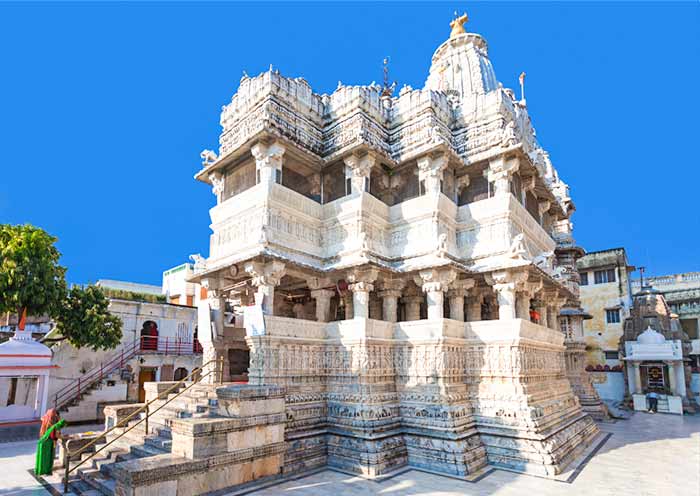
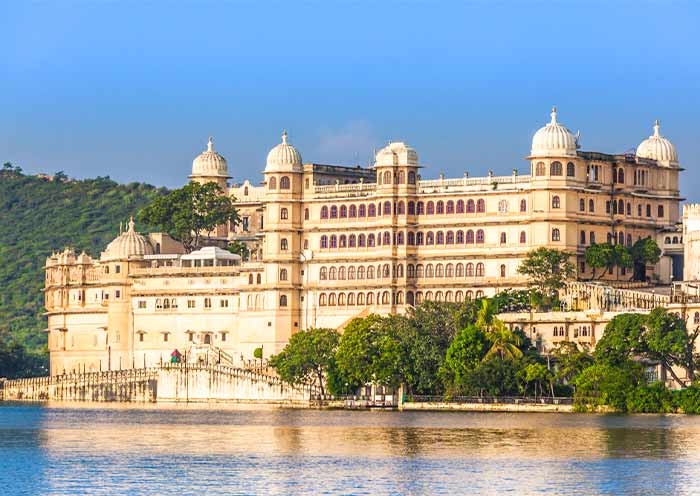

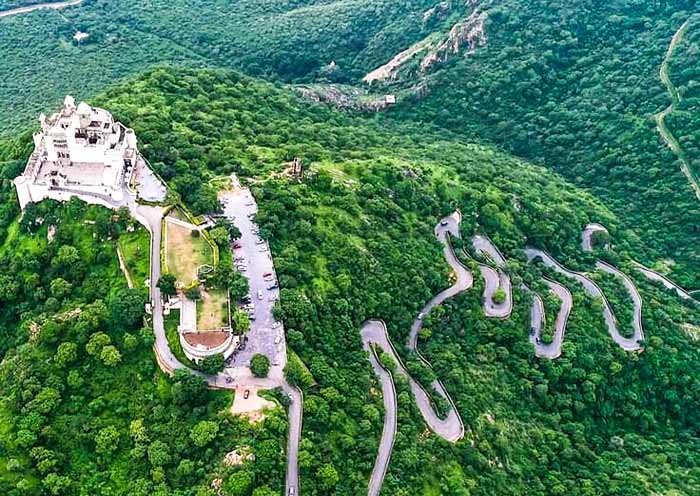
Attractions
4 iconic sites
Transportation
Vehicle
Dining
Breakfast
Accommodation
Udaipur
Today you will flight from Udaipur to Delhi (about 1 hours 20 minutes). And then at Indira Gandhi International Airport (IGI Airport), you can catch your flight home or your next destination.
It is time to end your 9-day India tour. If you prefer to travel longer in India, you can extend your trip to other highlighted parts of India, Varanasi, Ranthambhore, Pushkar, Jodhpur, Amritsar, etc.
Thank you for choosing Asia Odyssey Travel for your Asia tour, we are always here working for you and hope to see you again for your next trip to China/Asia. Safe journey


Attractions
None
Transportation
Flight
Dining
Breakfast
Accommodation
None
Choose Your Travel Date and Get Free Enquiry
| Month | Available Date | Price | Book The Tour |
|---|---|---|---|
| May | May.05, 2025 | from $908 | Free Enquiry |
| May.12, 2025 | from $908 | Free Enquiry | |
| May.19, 2025 | from $908 | Free Enquiry | |
| May.26, 2025 | from $908 | Free Enquiry |
Price: What’s Included & What’s Excluded
What’s Included:
What’s Excluded:
- 01 Typically, small group tours in India will have 2-12 travelers, and you will have the opportunity to meet and travel with tourists from different parts of the world
- 02 A minimum of 1 person is required to make a booking. Tours will be confirmed once the minimum group size is met.
- 03 The tour fee is based on double occupancy, assuming 2 persons sharing a room. If you are a solo traveler or have a specific request for a single room due to personal reasons, there will be an additional charge for a single room supplement.
- 04 A deposit is required at the time of booking to secure your place on the tour. The remaining balance is due no later than 30 days prior to the departure date.
- 05 Participants are strongly advised to purchase comprehensive travel insurance covering medical expenses, personal accident, cancellation, and personal property.
- 06 Please note that any non-participation in the itinerary will be considered as voluntary abandonment, and no refund will be provided for those activities or locations.
- 07 Any changes to the booking after confirmation may incur amendment fees, subject to availability and any additional costs imposed by suppliers.
- 08 For the safety and convenience of all travelers, it is not possible to accommodate requests to deviate from the tour itinerary during the trip. The service begins at Delhi Airport and ends at Delhi Airport.
Hotel Conditions for India Group Tour




3 Star Hotels are carefully selected based on cleanliness, safety, location, and character. Ratings are based on local standards, which may differ from those in your home country.
1. Upgrading Hotel Accommodation: If you desire a higher standard of accommodation, our travel experts can provide you with alternative pricing options for hotel upgrades. Whether you prefer a more luxurious experience or have specific preferences, the experts will assist you in making the best choice to suit your needs.
2. Room Allocation: Accommodations are generally provided on a twin-sharing basis. Single travelers may be paired with a fellow traveler of the same gender or can opt for a single supplement at an additional cost for private accommodations.
3. Check-In and Check-Out Times: Check-in time for the hotels is generally after 14:00 (2:00 PM), allowing you to settle in and freshen up before starting your adventure. On the day of departure, please check out before 12:00 noon to ensure a smooth transition and allow time for the hotel staff to prepare for incoming guests.
Latest India Group Tours Reviews from Our Customers

Jim
Australia
What a wonderful experience we had, with fabulous support from Alina at Asia Odyssey and from our great driver Vipin and our guides (Prerak in Delhi, Sanjay in Agra and Suresh in Jaipur). The guides were knowledgeable, communicative and friendly, and all had a good appreciation as well of food, which meant their restaurant suggestions were excellent. Vipin accompanied us throughout our trip and shared many things with us, beyond being a driver, including taking us to the Galvani Hindu temple in Jaipur.
What an amazing trip. We did the Golden Triangle, which has a particular focus on the architecture and history of the Mughul empire, especially Shah Jahan, who built the Taj Mahal. And the buildings are spectacular! The Taj is most known, and I found the inlay work (precious stones inlaid in the white marble) to be the highlight. We bought a marble elephant done in the same way as a reminder of the walls of the Taj - seeing the actual artisans doing this inlay work in with traditional tools added to our experience and we were delighted to buy some of their special work.
Having said that, my personal preference was for the red sandstone buildings rather than the white marble. The detailed work of carving the sandstone is for me as beautiful as the similar work on the marble, and the colours are nicer, softer.
Similarly, the timber constructions in Nepal were unbelievable - as detailed as the work we saw in India, and wonderfully maintained, even if it has experienced significant impacts from earthquakes.
The photos below highlight our experiences - the captions provide the rest of the detail.
Date of Experience: Sep 19, 2024
Tour Customized by: Alina
You May be Interested in This Tour: Customized Tour

Molly Durnas
US
I just graduated college and was planning on solo traveling Asia for 3 months. In the beginning of May, my mother very last minute decided that she would join me for a few weeks starting in the beginning of June. We both were very busy and had to quickly come up with a plan, which is when we found Asia Odyssey. Alina was super prompt in her response and quickly made us an itinerary for Nepal and Bhutan that fit exactly to our needs. After seeing how expertly Alina was able to create this itinerary, we also requested she make us an itinerary for India’s Golden Triangle including Delhi, Agra, and Rajasthan that we would embark on before Nepal/Bhutan.
Altogether we were under the care of Asia Odyssey for about a month, and simply could not have had a better experience. Alina was constantly in contact with us to make sure that everything was going smoothly and that we were having a wonderful time. In Nepal, we very last minute changed our plan to fly instead of drive for two of our locations and Alina was so understanding and helpful in allowing us to change our plans. Alina truly took wonderful care of us from start to finish and she is such a gem. Thank you so much for everything Alina!
Our trip to India felt right out of a magazine. Our driver Satish in India was with us over a week and is one of the kindest, most genuine people I have ever met in my entire life. I’ve been wanting to go to India with my mother for years and the trip was absolutely perfect - every hotel, every restaurant, every sight was absolutely wonderful. I was blown away with the country and the culture, and Asia Odyssey allowed us to experience it in the most comfortable and seamless way.
Our adventures in Nepal and Bhutan were some of the best of my life! The mountains and culture were unlike anything I’d experienced before, and I truly felt that I was able to get a genuine feel for the countries. The mountains and all of the buddhist monasteries and temples were some of the most beautiful things I’ve seen in my life. I absolutely cannot wait to come back - and when I do it will definitely be with Asia Odyssey.
Our guides Prarek, Ganesh, Narendra, Amit, Ghana, and Jigme throughout India, Nepal and Bhutan were all absolutely amazing, as were our drivers Satish, Keshav, and Momlal. Every single person we met was so incredible and made us feel so welcomed.
I cannot speak highly enough of Asia Odyssey and the hospitality shown by all involved in our trip. Thank you so much for the trip of a lifetime, and we hope to return very soon!
Date of Experience: Jun 01, 2024
Tour Customized by: Alina
You May be Interested in This Tour: Customized Tour

Dari D
US
I just returned from a last-minute fantastic month long mother-daughter trip through India, Nepal, and Bhutan. I had been to India 6 times in the past for work, but I never really had time to do much sightseeing. In May, I decided to meet up with my daughter in June in Delhi and spend a month touring India, Nepal, and Bhutan. I contacted Asia Odyssey Travel and started working with Ms. Alina Dan. She was absolutely amazing! I was so impressed how she designed our trips so quickly according to my requests. Furthermore, she gave me lots of advice and feedback as we worked through all the details to really come up with a great plan.
She secured the Bhutan visas for us, explained how we could easily get the Nepal visas upon arrival, and provided links for us to get the Indian visas. Overall, it was a painless process. I really appreciated her guidance as it seems difficult to get accurate info regarding visa requirements in the post covid world.
We stayed in a huge variety of beautiful, unique hotels. None of them felt particularly touristy, and we enjoyed all of them... from rural lodges to sophisticated, beautiful city hotels.
All of our guides and drivers were amazing, which we truly appreciated given the fact that we arranged the whole trip within a few weeks of our departure. We really miss Satish, our wonderful driver in India, who was with us throughout all of our India adventures. He always showed so much care and concern for us day after day.... despite some of our sometime crazy requests! I'm not sure how Alina pulled all the details and great people together so quickly, but it was really wonderful.
I will definitely go with Asia Odyssey Travel on my next trip to Asia. I can't say enough good things about them!
Date of Experience: Jun 01, 2024
Tour Customized by: Alina
You May be Interested in This Tour: Customized Tour
